Astronomy
-
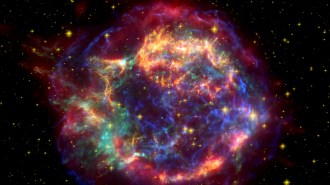 Astronomy
AstronomyHow massive stars in binary systems turn into carbon factories
A massive star with an orbiting partner star ejects on average twice as much carbon, an element crucial for life, into space compared with a solo star.
By Ken Croswell -
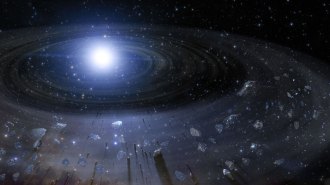 Astronomy
AstronomyDistant rocky planets may have exotic chemical makeups that don’t resemble Earth’s
Elements sprinkled on white dwarf stars suggest that the mantles of faraway rocky worlds differ greatly from their counterparts in our solar system.
By Ken Croswell -
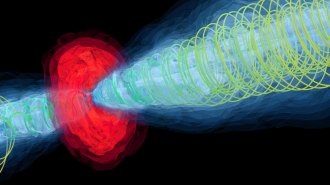 Space
SpaceA stunning simulation re-creates how M87’s black hole launches plasma jets
Two jets, thousands of light-years long, are re-created in a computer simulation, which suggests that M87’s black hole must be spinning rapidly.
-
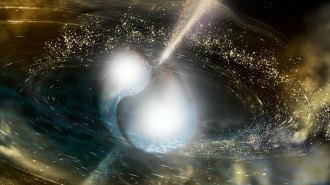 Physics
PhysicsNeutron star collisions probably make more gold than other cosmic smashups
Smashups of two neutron stars produce more heavy elements than when a black hole swallows a neutron star, calculations suggest.
-
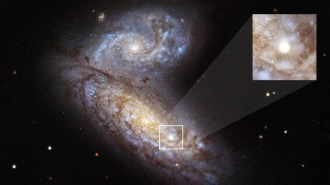 Space
SpaceA rush to watch a supernova exposed its last gasp before exploding
By studying the final years of stars, scientists hope to find clues to help them recognize when other stars are about to blow.
-
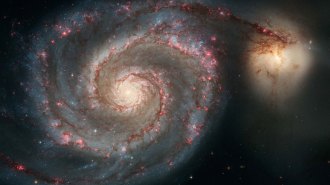 Astronomy
AstronomyAstronomers may have spotted the first known exoplanet in another galaxy
The spiral-shaped Whirlpool galaxy may be the host of the first planet spotted outside of the Milky Way.
-
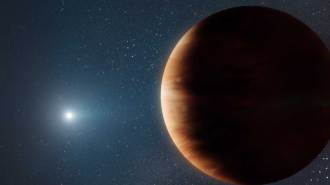 Astronomy
AstronomyA Jupiter-like planet orbiting a white dwarf hints at our solar system’s future
A new planet is the first ever discovered that is orbiting a white dwarf and resembles Jupiter in both its mass and its distance from its star.
By Ken Croswell -
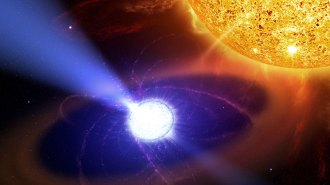 Astronomy
AstronomyThe fastest-spinning white dwarf ever seen rotates once every 25 seconds
A white dwarf star that spins every 25 seconds owes its record-breaking rotation rate to a companion star dumping gas onto it.
By Ken Croswell -
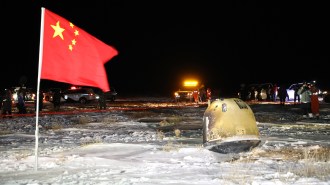 Astronomy
AstronomyChina’s lunar rock samples show lava flowed on the moon 2 billion years ago
The first lunar rocks returned to Earth in more than 40 years show that the moon was volcanically active later than scientists thought.
By Freda Kreier -
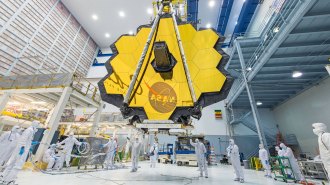 Astronomy
AstronomyWhen James Webb launches, it will have a bigger to-do list than 1980s researchers suspected
The James Webb Space Telescope has been in development for so long that space science has changed in the meantime.
-
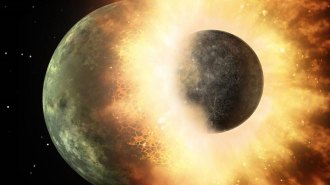 Astronomy
AstronomySpace rocks may have bounced off baby Earth, but slammed into Venus
New simulations suggest a way to help explain dramatic differences between the sibling worlds.
-
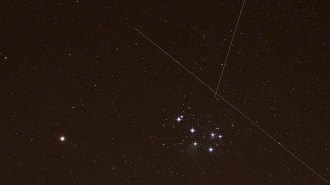 Astronomy
AstronomySatellite swarms may outshine the night sky’s natural constellations
Simulations suggest that satellite “mega-constellations” will be visible to the naked eye all night long in some locations.